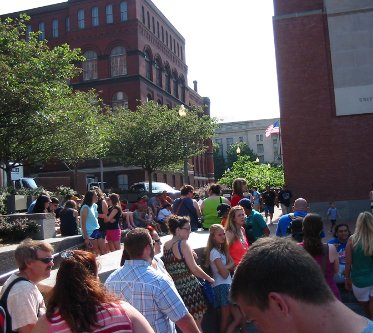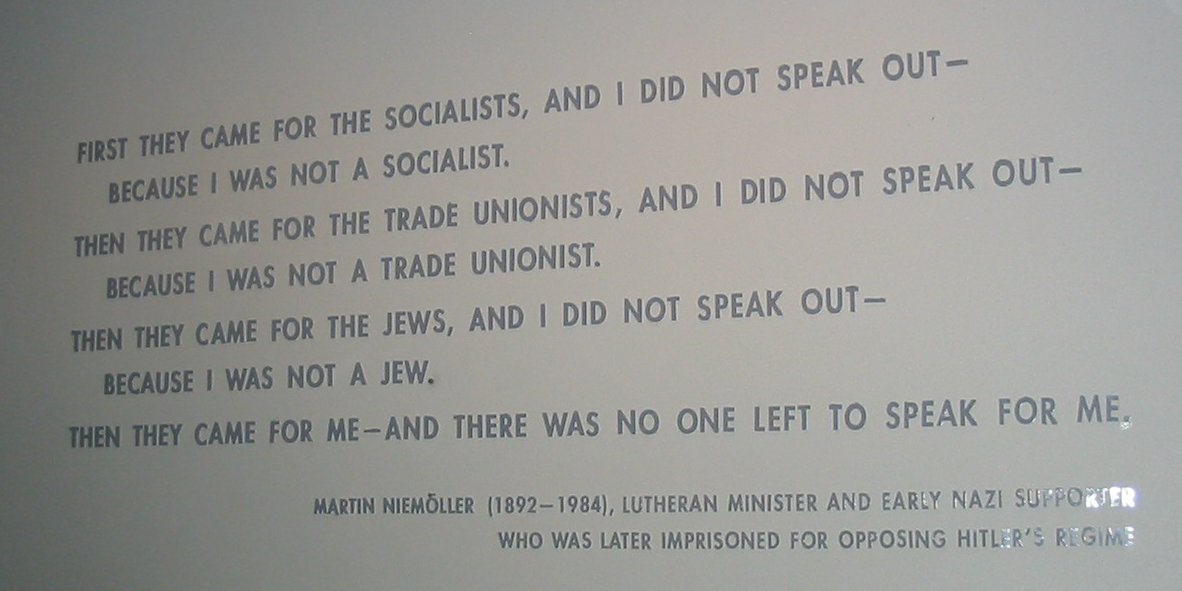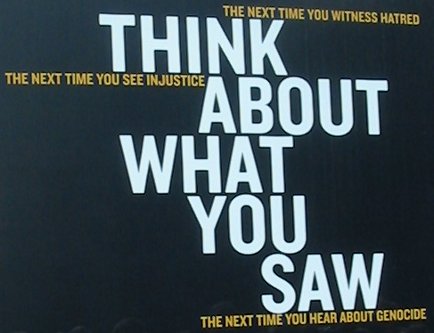Somewhere back there my Dad and I
had agreed to see the Holocaust Museum together when we were both
in DC. This was one of those "seeing it in the paper and agreeing
to see it" kind of things. I figured this was the closest I'd ever
get to seeing it with him, so I went there first on my first
tourist walk. When I got there we were cuing up to get entry
tickets. Some had been there quite a while, but the plaza behind
me filled up quickly.
To make a long story short, my
entry time was only an hour in the future. Conveniently, in the
auditorium downstairs there was a talk about American GIs and the
Holocaust would start in five minutes and last most of the time
till then. I got a seat just before this woman took the stage and
started talking.
She explained that most GIs avoided
the concentration camps. However, during the battle of the bulge a
group of Americans had been surrounded by the Germans and
surrendered. The Germans figured out that the "H" on their dog
tags meant Jewish, so they culled all the Jewish soldiers and sent
them off to Buchenwald (or something like that). Some of those in
fact did get worked to death. However, the camp was liberated soon
enough that many were saved. She told several stories about
herself personally talking to a couple of those survivors. She
asked us to look at the diorama that talked about that aspect of
it in the exhibits afterwards.
After the talk I saw a few people
go up to her that told her they were related to one of those GIs.
She had the names of all of them and already knew something about
that person but got right into looking for more with questions. I
wandered off. Time to see this famous museum.
The exhibit was depressing and
interesting. The early part explained how the discrimination
against Jews and other minorities ramped up under the Nazis. It
was more extreme every year. Finally it got to carting them off or
killing them. The possessions of the disappeared would be
auctioned off on street corners. There would be more food for
everybody else. Most Germans just let it happen. The Nazis counted
on that. They were only a tiny minority and they would have gotten
nowhere without their public offices. There was plenty of detail
about the horrible death tolls and how they happened. Then there
were a set of plaques looking back on a country by country basis.
Below are the best of those.
The rest were much worse.
The message of the place struck me.
"Places where other people saw the Jews as part of "us", they
stood up to the Nazis and the survival rate was better. This was
true even on much smaller scales. Think about Anne Frank. She only
needed one hiding hole, and one family friend was close to being
enough. Yup. There was something of hers, a brief bio, and a
sample of her hand writing in the museum to. So many stories. By
the time I walked out into the bright humid afternoon sun they
were closing and my head was spinning.
If you're in DC with a few hours and
you need a reality check on this whole civilization thing, see
this place.








